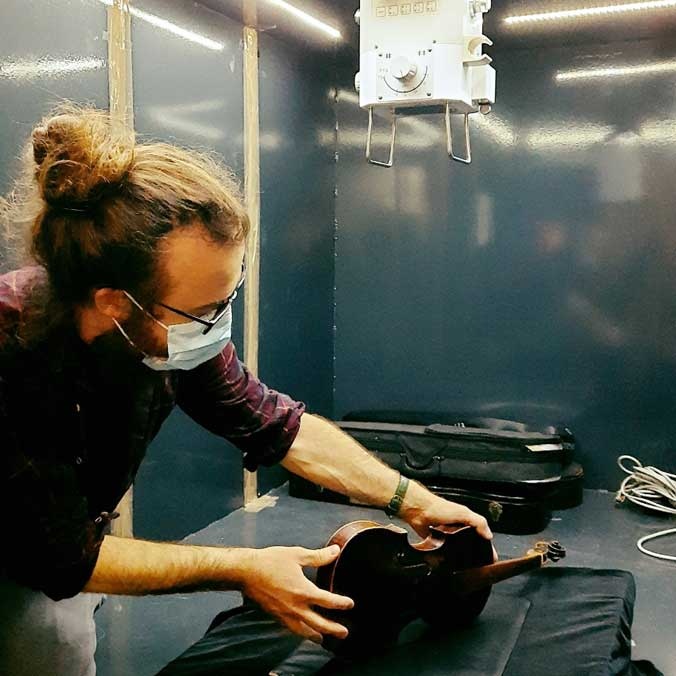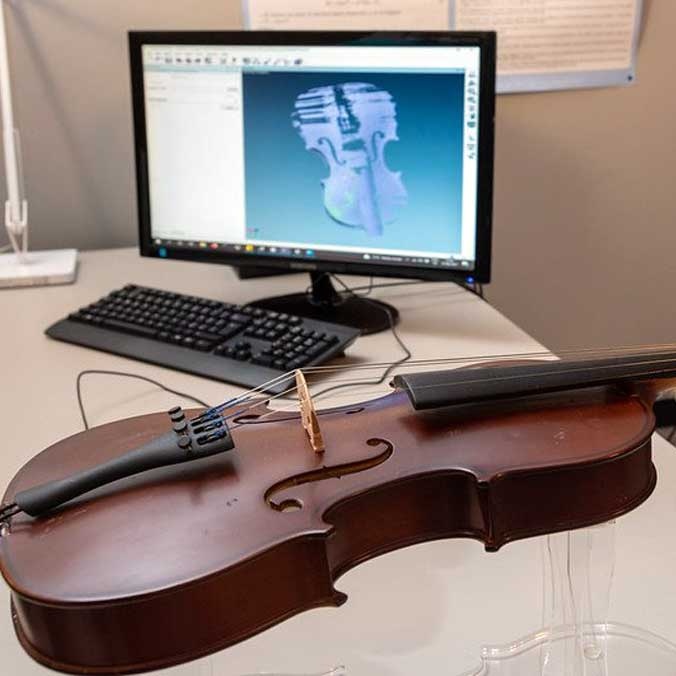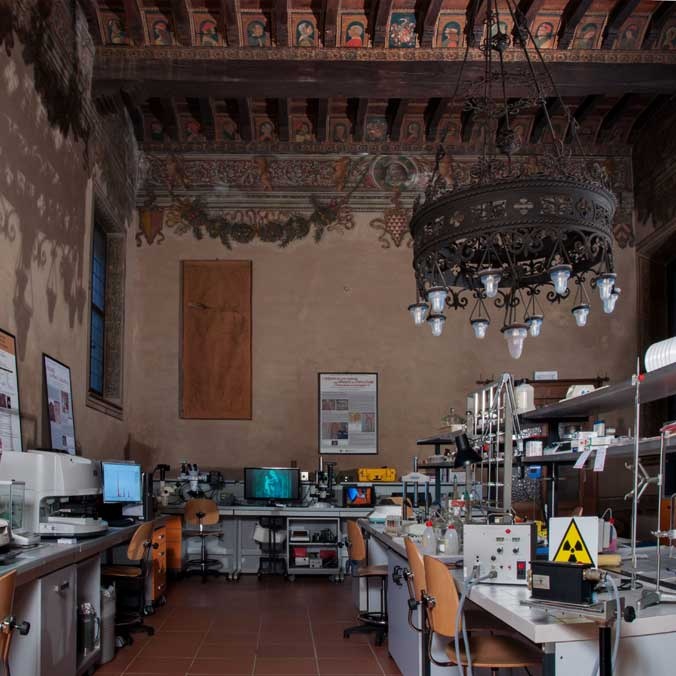The scientific laboratories in Cremona undertake research into the materials and vibroacoustic behaviour of instruments from the past in order to scientifically understand their behaviour. Modern bowed stringed instruments are, in fact, the result of technical development based on the practical experiences of generations of luthiers with the aim of improving acoustic projection and sound quality. Nowadays, we have centres that investigate all aspects of the sound production of bowed stringed instruments by collecting huge and varied amounts of information and analyzing it in its entirety. This is also the case in Cremona.
Arvedi Laboratory of Non-Invasive Diagnostics (UniPv)
The laboratory, which is located inside the Museo del Violino, conducts non-invasive investigations, meaning that material samples are not required, that are specifically designed with musical instruments in mind.
Deciding what measures are the most appropriate for preserving an antique musical instrument involves a certain reflection on the ways in which we might understand this particular type of heritage. There are, in fact, two ways, one static and one dynamic: the former considers the instrument as a material asset of historical value, capable of producing culture in its own right, while the latter considers it as such because it is capable of producing culture owing to its function, i.e. the fact that it can be played. This duality raises various questions when it comes to preservation: what is the best option for preserving antique musical instruments? Should functionality be maintained, or should the object simply be preserved as it is, resting silently inside a display case? Cremona aims to overcome the dichotomy between the two models by means of collaboration among various scientific profiles and competencies. Scientific research can, in fact, determine the most appropriate conditions under which a musical instrument should be used with a view to ensuring that it is properly preserved. Dealing with the ethics of preserving musical instruments is an extremely complex task that ultimately identifies those measures deemed to be the best to be subsequently applied to all existing antique musical instruments. Gathering as much information as possible on antique instrument materials, as the Arvedi laboratory is currently doing, helps to form the foundations for better defining the procedures for restoring and preserving antique musical instruments and will provide a usable memory should the decision be made, based on the in-depth studies that will have been performed, to preserve an instrument in a display case.
The laboratory operates in two main fields of research, one dedicated to musical instruments, the other to Stradivarian artefacts: a collection of paper documents, work tools, instrument parts, etc. belonging to the huge collection that came from the former Stradivarian museum.
More info
Musical acoustics research laboratory – Polytechnic University of Milan
Modern bowed stringed instruments are the result of technical development based on the practical experiences of generations of luthiers with the aim of improving acoustic projection and sound quality. That said, there is still a long way to go before we fully understand the way in which the instrument (understood as an ‘object’) influences vibroacoustic behaviour and timbre performance, since the complexity of the physical and perceptual phenomena being analyzed requires contributions from various disciplines. This is where the Polytechnic University of Milan, also housed at the Museo del Violino, along with the non-invasive diagnostics laboratory, comes in. The laboratory actually investigates all aspects of the sound production of bowed stringed instruments not only by recording huge and varied amounts of information but also by analyzing it in its entirety.
Research into bowed stringed instruments from a scientific perspective had already begun in the last century, with antique instruments produced by the greatest luthiers having been analyzed in terms of their materials, form and sound characteristics using methods borrowed from the fields of acoustics, materials science, structural mechanics and computational science. Significant research had also been conducted on the vibrational behaviour of the sound box, the interaction between the strings and the bow, and radiance patterns, namely the ways in which the sound from the instrument travels through space. In the laboratory’s early years, analyses were performed in three main fields: the study of sound generation, acoustic radiance analysis and timbre analysis.
More info
Cr.Forma
Cr.Forma is a special agency of the Province of Cremona that provides training services and has its own restoration school offering vocational training in luthiery, restoration and the preservation, protection and enhancement of cultural heritage, along with a whole host of opportunities.
More info

